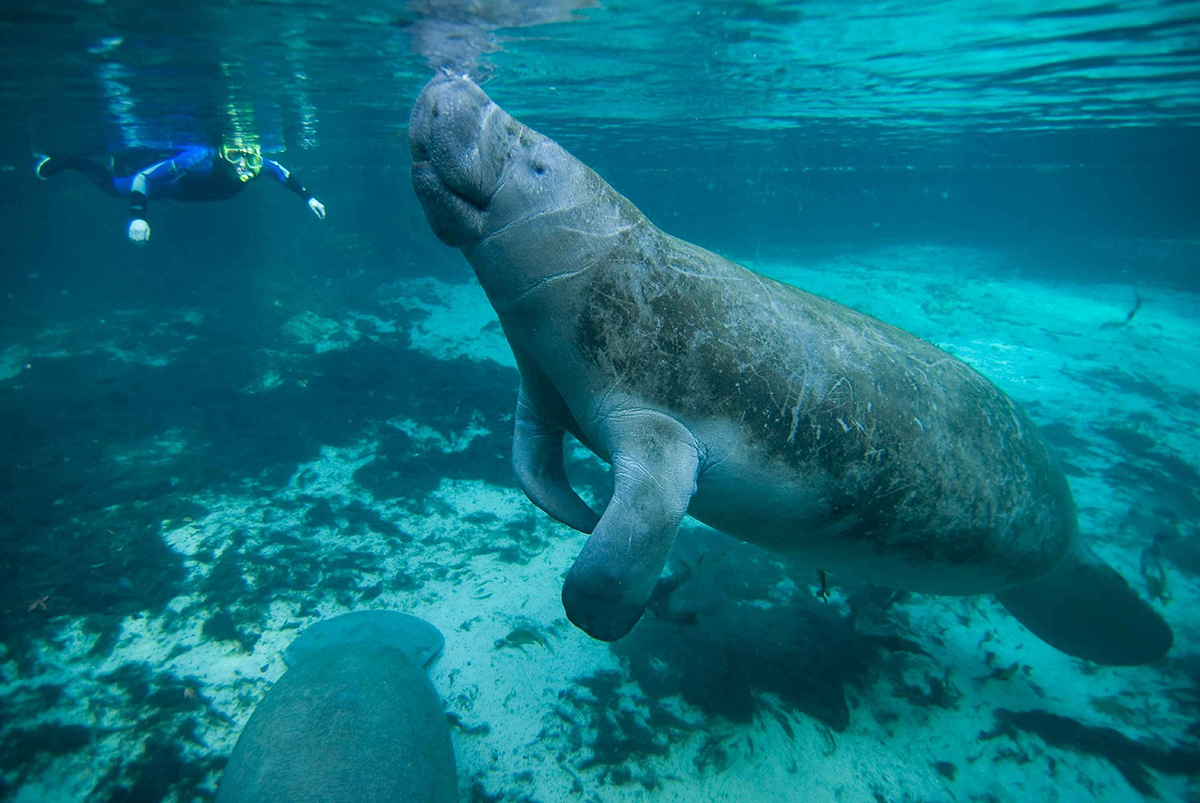Over 1,000 manatee deaths were reported last year, much more than the 593 in 2020.
Courtesy of Max Pixel
By Schuyler Jones
Manatees are Florida’s official state sea creature and a vital part of its marine ecosystem.
These gentle giants can weigh up to 1,200 pounds and have earned the nickname “sea cows” for their inclination to graze the sea floor.
According to the U.S. Department of the Interior, on his journey to the Americas, Christopher Columbus, mistook manatees for mermaids due to their two fore flippers and paddle shaped tails, writing in his journal “they are not so beautiful as they are said to be.”
Taylor Herman, a sophomore political science major, begs to differ.
“The first time I saw manatees in the campus harbor I was blown away. I can’t imagine a more unique but adorable animal,” Herman said.
Previously on the endangered species list, manatees made a spectacular comeback in recent years. In 2019, the Florida Fish and Wildlife Conservation Commission (FWC) counted nearly 6,000 in their yearly aerial survey.
Tragically, things have taken a turn for the worse.
In 2020, the FWC tallied 593 manatee deaths state-wide and last year the number soared past 1,000.
The main reason for this is a lack of sea grass. In the winter, manatees migrate south to find warmer water. However, worsening algal blooms block out sunlight and kill seagrass beds. Now, manatees are arriving at their winter oases only to find their usual feeding grounds resembling a barren moonscape.
To save this threatened species, last December the federal government approved a “temporary field response station” to feed malnourished manatees. The FWC will offer romaine lettuce to manatees concentrating in the warm waters surrounding a Brevard County power plant.
So far, manatees have ignored the suspicious human land greens, preferring to forage their natural habitat. This could change as soon as colder weather forces manatees to concentrate in higher numbers.
If manatees develop a taste for romaine, how will the lettuce’s nutrient and caloric profile compare to sea grass?
Additionally, an adult manatee can consume 100 pounds of sea greens in a day, so will the FWC be able to meet the potential demand of hundreds of sea cows throughout the winter season?
When asked about her opinion on the emergency feeding response, Dilek Refka, a sustainability major said, “I hope that with further research more effective manatee feeding stations can be created.”
Whether or not the feeding plan proves successful, we cannot ignore the source of the problem: dying seagrass beds.
Manatees aren’t the only species dependent on seagrass and supporting the entire marine ecosystems with lettuce is unrealistic. Until we take significant action to curb pollution and restore seagrass beds, manatees and other sea life may struggle to find their next meal.



